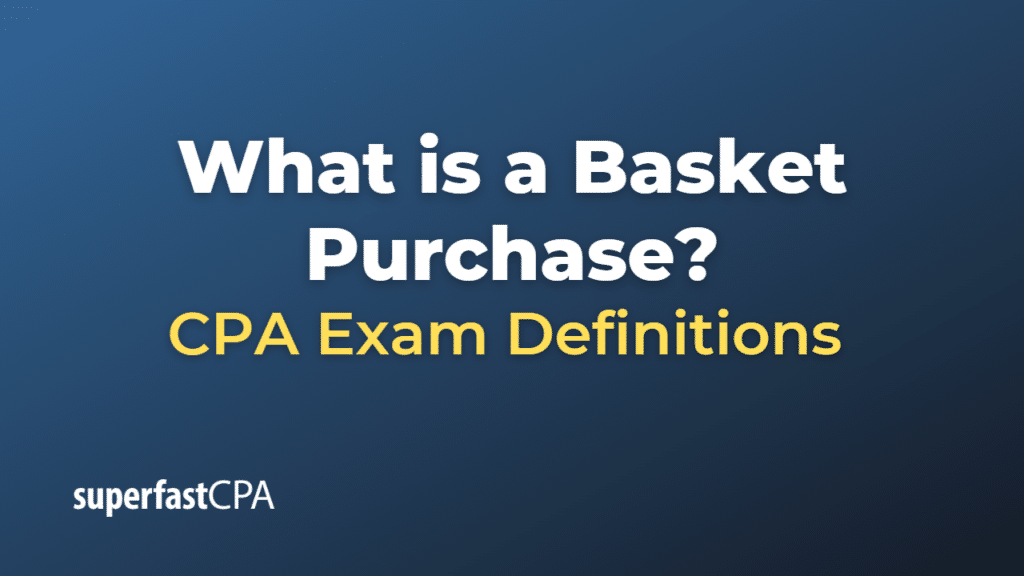Basket Purchase
A basket purchase, also known as a lump-sum purchase, refers to the acquisition of multiple assets or items together in a single transaction for a combined purchase price. This situation often arises when a business purchases a group of assets, such as machinery, equipment, or intangible assets, from another company or during the acquisition of a business.
In accounting, when a basket purchase occurs, it is necessary to allocate the total purchase price among the individual assets based on their respective fair market values. This allocation process is essential because it determines the cost basis of each asset, which is used for depreciation, amortization, and the calculation of gains or losses upon disposal of the assets.
Example of a Basket Purchase
Let’s consider a fictional example of a basket purchase involving a restaurant.
Suppose Mary acquires an existing restaurant business for a total purchase price of $500,000. This purchase includes the building, kitchen equipment, and furniture. The fair market values of these assets are as follows:
- Building: $400,000
- Kitchen equipment: $80,000
- Furniture: $20,000
To allocate the purchase price among the individual assets, Mary needs to determine the proportion of each asset’s fair market value to the total fair market value. The total fair market value is $400,000 (building) + $80,000 (kitchen equipment) + $20,000 (furniture) = $500,000.
Next, calculate the proportion of each asset’s fair market value:
- Building: $400,000 / $500,000 = 0.8
- Kitchen equipment: $80,000 / $500,000 = 0.16
- Furniture: $20,000 / $500,000 = 0.04
Now, Mary can allocate the total purchase price ($500,000) among the assets based on their respective proportions:
- Building: $500,000 × 0.8 = $400,000
- Kitchen equipment: $500,000 × 0.16 = $80,000
- Furniture: $500,000 × 0.04 = $20,000
The allocated purchase price for each asset matches their fair market values in this example. Mary will use these allocated amounts as the cost basis for depreciation and the calculation of gains or losses upon disposal of the assets.













